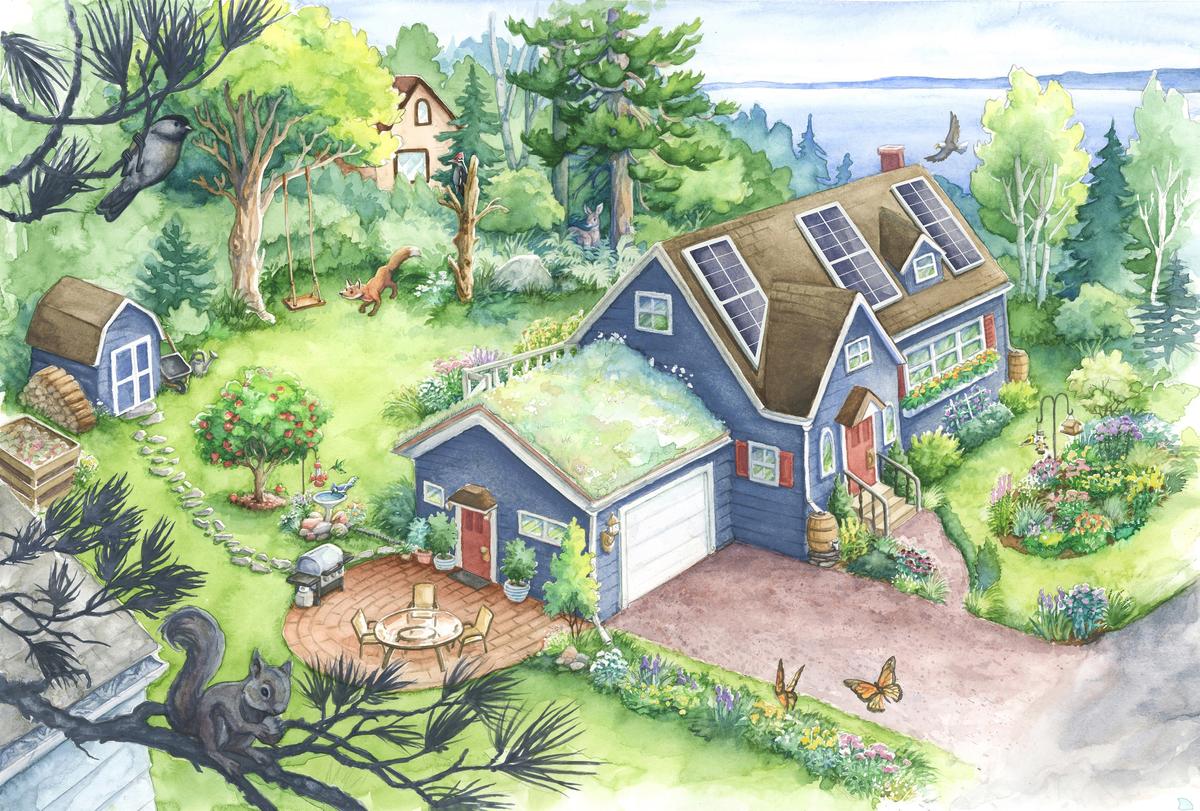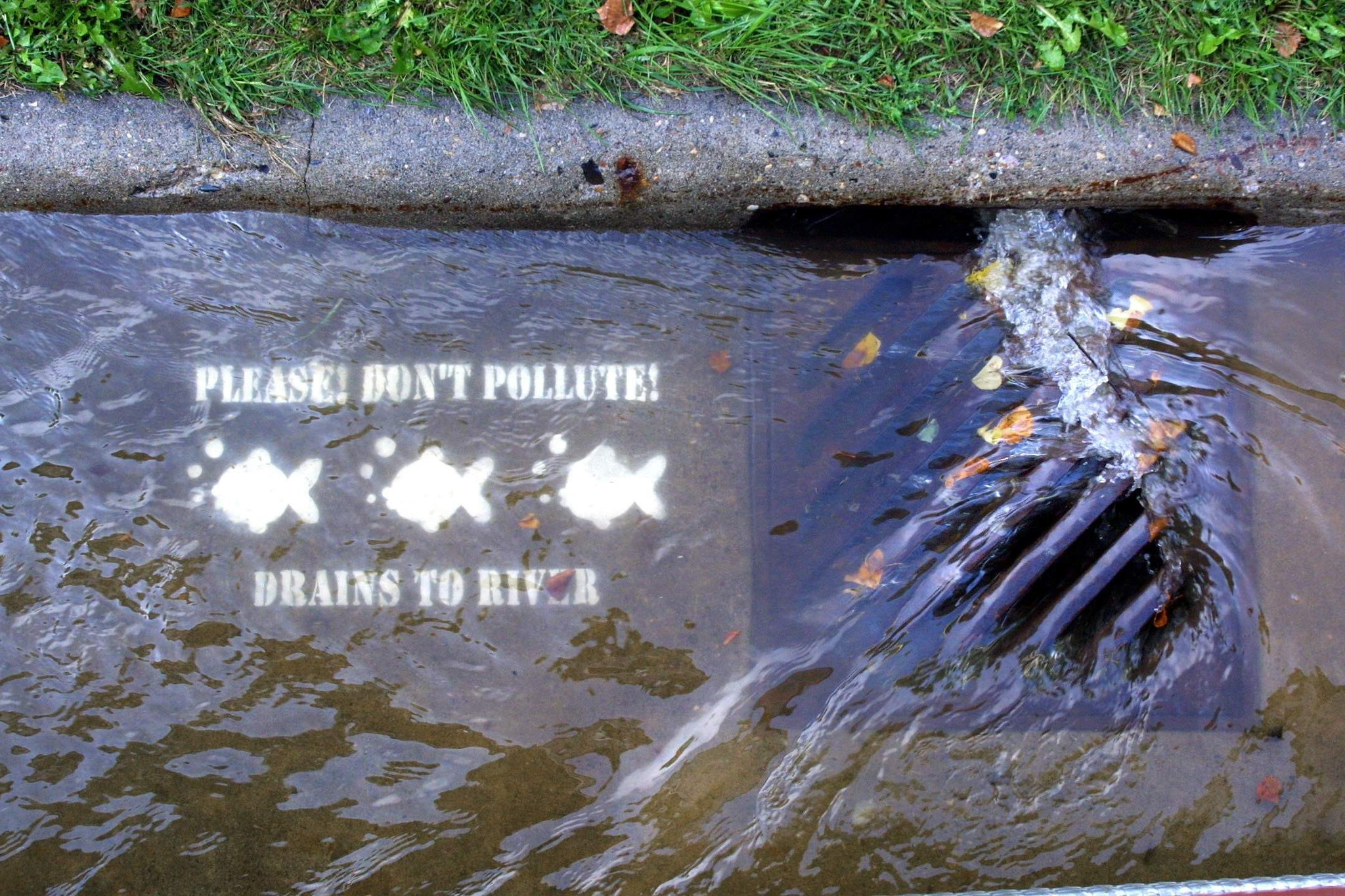Ah, spring is in the air! Longer days, robins flitting about, trees budding, weekly snow storms…While many of us in northern Minnesota are still hunkered down inside, drinking warm beverages, and wondering when we can put the snow shovels away, some of us are also starting our plant seedlings, ordering baby chicks and dreaming up our yard projects for the year. And topping my list this year: green infrastructure projects to control water runoff from my property.
That may sound daunting, but don’t worry, I’ll walk you through some easy starting points. Let’s get started!
What is runoff and stormwater?
Stormwater is rain and snow that falls to the ground and moves across the landscape. In natural areas, such as forests and wetlands, that water can soak into the ground to support plants and replenish groundwater. But, when we cover up or remove those natural areas by building houses, roads, schools and shopping areas, that water now runs across impervious surfaces and cannot easily soak into the soil.
This runoff will also pick up and carry with it whatever is lying about on those sidewalks and roads – think pet waste, grass clippings, sediment, road salt, oils and bacteria. That water then moves off buildings and roads into nearby ditches or storm drains, and makes its way, untreated, to our favorite lakes, streams and rivers. Poor fishies.
Green Infrastructure 101
Don’t fret – we can be part of the solution! Green Infrastructure practices either work with nature, or by mimicking nature, to soak up water where it falls, slowing runoff from your property. Some practices will filter harmful pollutants before reaching local waterways, whereas others will allow water to soak into the ground, helping to maintain healthy water tables for drinking water and wells.
Planting trees and rain gardens, using green roofs and vegetated swales, and installing pervious pavers and rain barrels, are all Green Infrastructure practices we can use on our properties to protect our local lakes and streams. Many of these practices support pollinators and wildlife and are beautiful additions to your yard – a win for you, a win for the critters, and a win for the water!
Tiff’s Top 10 Green Infrastructure Practices
- Maintain 3” tall grass: Keep your grass at least 3 inches in height, allowing for deeper and denser roots that absorb more runoff and stabilize your lawn.
- Aerate your lawn: Ugh, I know, more talk about grass, Tiff’s #1 enemy. But even I confess to maintaining a green plot on my property (completely surrounded by native plants though, so my guilt-ridden green patch remains hidden from curious neighbors). Point being, our yards become compacted over time from mowing, intense games of badminton, kiddie pool parties, and the like, and aeration improves the ability of water to soak into the soil below your lawn.
- Vegetate bare areas: Keep soil erosion to a minimum by planting trees, shrubs, natives or at the very least, grass, in bare areas of your yard.
- Direct downspouts to vegetated areas: Redirect your downspouts away from your sidewalk and towards a vegetated area; this removes a public hazard and allows water the opportunity to soak into the ground rather than immediately flowing into a storm drain or ditch.
- Plant a tree: Or some shrubbery to help slow and infiltrate water on your property; a fruit-bearing tree or shrub could provide food for you or wildlife.
- Create a low mow zone: Designate an area of your property as minimal maintenance. This allows native grasses and wildflowers to flourish, provides wildlife habitat and filters runoff. Mow this area only 1 or 2 times a year.
- Install a rain barrel: (Classic move!) Place a rain barrel underneath a downspout or roof drip line, preserving water for your gardens. Not a gardener? Slowly, and over time, disperse rain barrel water to your low mow zone or to water the bare areas you’re now vegetating.
- Build a rain garden or vegetated swale: Green Infrastructure cousins, these practices are iconic, allowing water to soak into the ground with beautiful native flowers and happy bees a-buzzing.
- Install pervious pavers: While the gold star may be to convert your driveway to pervious pavers, consider other areas of your yard like a walkway or a patio; these pavers are specifically engineered to allow water to flow between pavers.
- Be a Green Infrastructure champion! Regardless of your lifestyle, capabilities, budget or property size, you can become a Green Infrastructure champion in your social circles and neighborhood. Tell all your friends, grandmas, aunts and tiny children in your life about the importance of using nature-based solutions to keep our lakes and streams healthy and happy!
You can learn more about water conservation practices, sustainable landscape design, planting flowers for pollinators, and how to build a rain garden through the University of Minnesota Extension webpage on yards and gardens.
Until next month,
Tiff

